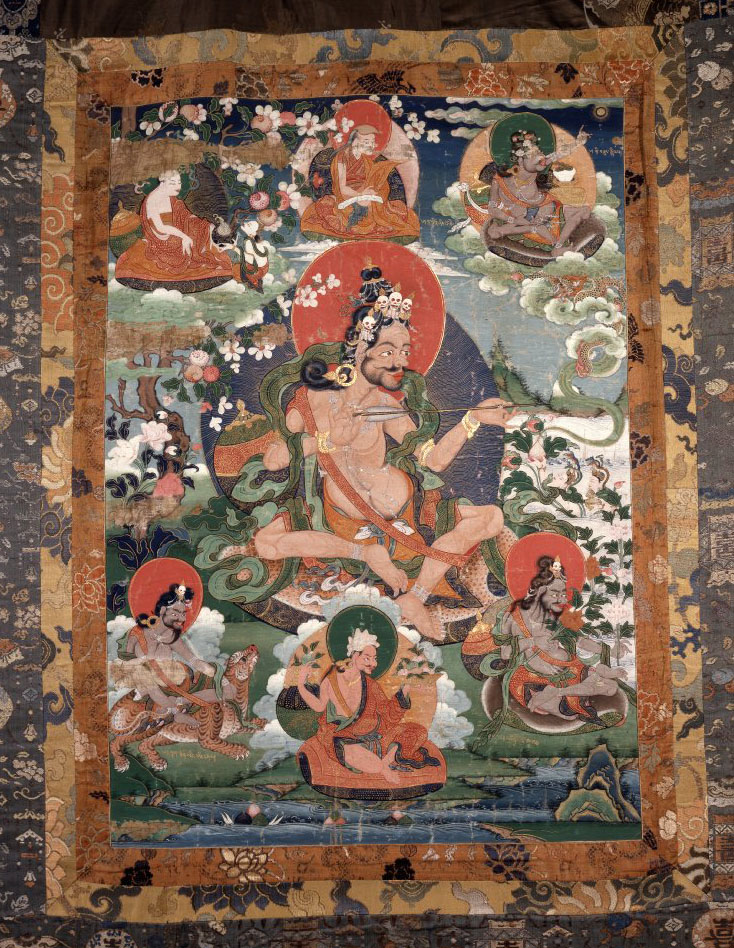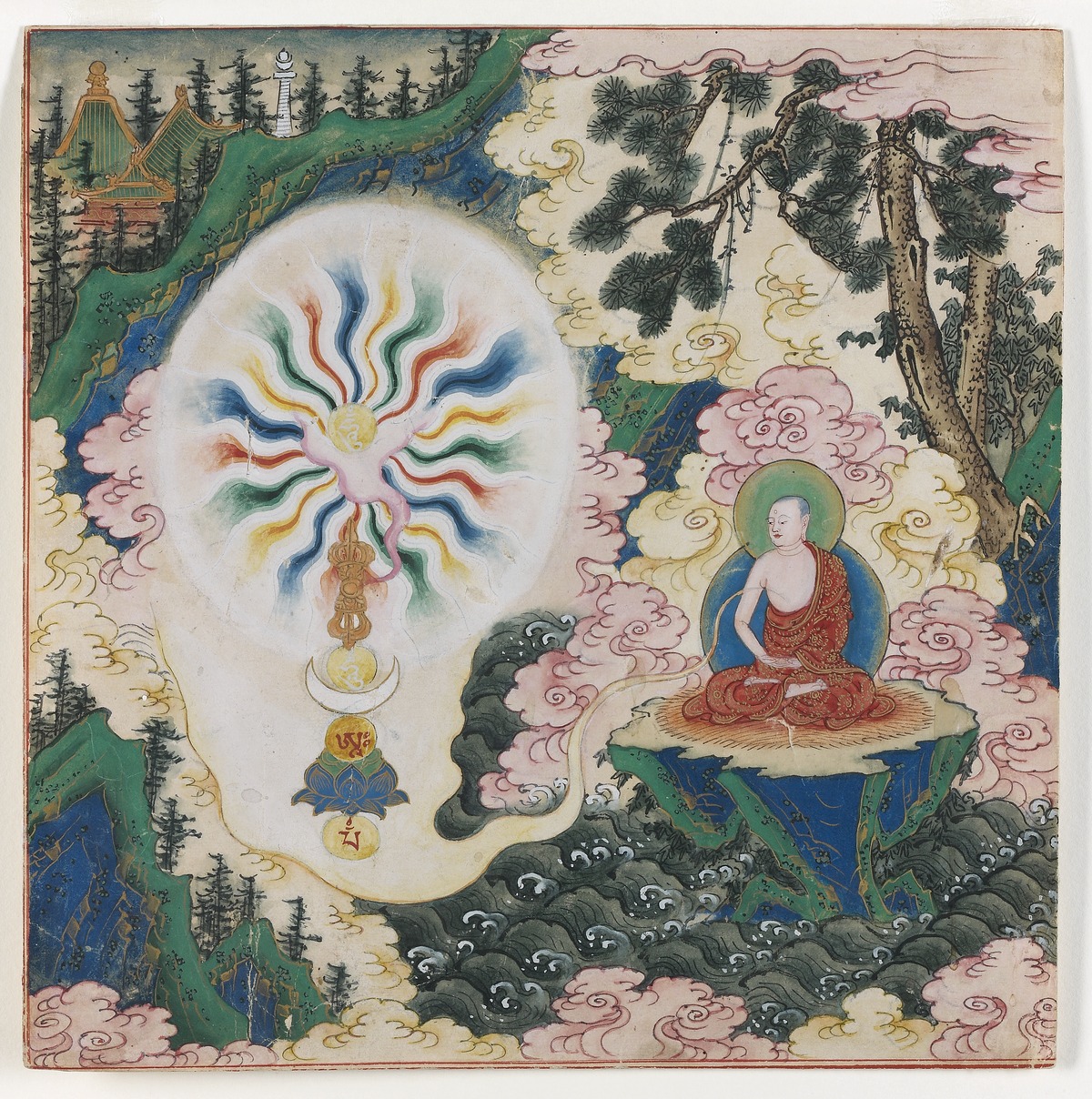|
Sahajiyas
Vaiṣṇava Sahajiyā was a form of Hindu tantric Vaishnavism focused on Radha Krishna worship that developed in the region of Greater Bengal (Bengal, Bihar, Orissa, Assam).Hayes, Glen A"The Vaisnava Sahajiya Traditions of Medieval Bengal" in ''Religions of India in Practice'', edited by Donald S. Lopez, Jr., Princeton Readings in Religions, Princeton: Princeton University Press, 1995: 333-351. This tradition flourished from the 16th to the 19th century. The Vaiṣṇava Sahajiyā tradition produced many great poets who wrote in the Bengali language, the most famous of these poets all wrote under the pen name Chandidas (a name used by various authors).Young, Mary (2014). ''The Baul Tradition: Sahaj Vision East and West,'' pp. 27-36. SCB Distributors. Their religious literature was mainly written in Bengali vernacular. Vaiṣṇava Sahajiyā used the romance between Krishna and Radha as a metaphor for union with the innate or primordial condition (the Sahaja) present in everyo ... [...More Info...] [...Related Items...] OR: [Wikipedia] [Google] [Baidu] |
Sahaja
Sahaja ( pra, সহজ sa, सहज ) means spontaneous enlightenment in Indian and Tibetan Buddhist spirituality. Sahaja practices first arose in Bengal during the 8th century among yogis called Sahajiya siddhas. Ananda Coomaraswamy describes its significance as "the last achievement of all thought", and "a recognition of the identity of spirit and matter, subject and object", continuing "There is then no sacred or profane, spiritual or sensual, but everything that lives is pure and void." Etymology The Sanskrit nd the Tibetan, which precisely follows itliterally means: 'born or produced together or at the same time as. Congenital, innate, hereditary, original, natural (...by birth, by nature, naturally...)'. Etymologically, means 'together with', and derives from the root , meaning 'to be born, produced, to occur, to happen'. The Tibetan is an exact etymological equivalent of the Sanskrit. means 'together with', and means 'to be born, to arise, to come about, to be ... [...More Info...] [...Related Items...] OR: [Wikipedia] [Google] [Baidu] |
Chandidas Bhita At Nanoor 04
Chandidas (born 1408) was a medieval poet of Bengal, or possibly more than one. Over 1250 poems related to the love of Radha and Krishna in Bengali with the ''bhanita'' of Chandidas are found with three different sobriquets along with his name, ', ''Dvija'' and ''Dina'' as well as without any sobriquet also. It is not clear whether these ''bhanita''s actually refer to the same person or not. It is assumed by some modern scholars that the poems which are current in the name of Chandidas are actually the works of at least four different Chandidas, who are distinguished from each other by their sobriquets found in the ''bhanita''s. It is also assumed that the earliest of them was Ananta Chandidas, who has been more or less identified as a historical figure born in the 14th century in Birbhum district of the present-day West Bengal state and wrote the lyrical ''Srikrishna Kirtan'' (Songs in praise of Krishna). ''Srikrishna Kirtan'' In 1916, the Bangiya Sahitya Parishad published t ... [...More Info...] [...Related Items...] OR: [Wikipedia] [Google] [Baidu] |
Twilight Language
Twilight language is a rendering of the Sanskrit term ' (written also ', ', '; , THL ''gongpé ké'') or of their modern Indic equivalents (especially in Bengali, Odia, Assamese, Maithili, Hindi, Nepali, Braj Bhasha and Khariboli). As popularized by Roderick Bucknell and Martin Stuart-Fox in ''The Twilight Language: Explorations in Buddhist Meditation and Symbolism'' in 1986, the notion of "twilight language" is a supposed polysemic language and communication system associated with tantric traditions in Vajrayana Buddhism and Hinduism. It includes visual communication, verbal communication and nonverbal communication. Tantric texts are often written in a form of the twilight language that is incomprehensible to the uninitiated reader. As part of an esoteric tradition of initiation, the texts are not to be employed by those without an experienced guide and the use of the twilight language ensures that the uninitiated do not easily gain access to the knowledge contained in t ... [...More Info...] [...Related Items...] OR: [Wikipedia] [Google] [Baidu] |
Brahman
In Hinduism, ''Brahman'' ( sa, ब्रह्मन्) connotes the highest universal principle, the ultimate reality in the universe.P. T. Raju (2006), ''Idealistic Thought of India'', Routledge, , page 426 and Conclusion chapter part XII In major schools of Hindu philosophy, it is the material, efficient, formal and final cause of all that exists.For dualism school of Hinduism, see: Francis X. Clooney (2010), ''Hindu God, Christian God: How Reason Helps Break Down the Boundaries between Religions'', Oxford University Press, , pages 51–58, 111–115;For monist school of Hinduism, see: B. Martinez-Bedard (2006), ''Types of Causes in Aristotle and Sankara'', Thesis – Department of Religious Studies (Advisors: Kathryn McClymond and Sandra Dwyer), Georgia State University, pages 18–35 It is the pervasive, infinite, eternal truth, consciousness and bliss which does not change, yet is the cause of all changes. ''Brahman'' as a metaphysical concept refers to the single bi ... [...More Info...] [...Related Items...] OR: [Wikipedia] [Google] [Baidu] |
Chaitanya Mahaprabhu
Chaitanya Mahaprabhu (; born Vishvambhar Mishra) was a 15th-century Indian saint who is considered to be the combined avatar of Radha and Krishna by his disciples and various scriptures. Chaitanya Mahaprabhu's mode of worshipping Krishna with ecstatic song and dance had a profound effect on Vaishnavism in Bengal. He was also the chief proponent of the Vedantic philosophy of Achintya Bheda Abheda Tattva. Mahaprabhu founded Gaudiya Vaishnavism ( the Brahma-Madhva-Gaudiya Sampradaya). He expounded Bhakti yoga and popularized the chanting of the Hare Krishna Maha-mantra. He composed the ''Shikshashtakam'' (eight devotional prayers). Chaitanya is sometimes called Gauranga or Gaura due to his molten gold–like complexion. His birthday is celebrated as Gaura-purnima. He is also called Nimai due to him being born underneath a Neem tree. Life '' Chaitanya'' means "one who is conscious" (derived from Chetana, which means "Consciousness"); ''Maha'' means "Great" and ''Prabhu' ... [...More Info...] [...Related Items...] OR: [Wikipedia] [Google] [Baidu] |
Monism
Monism attributes oneness or singleness (Greek: μόνος) to a concept e.g., existence. Various kinds of monism can be distinguished: * Priority monism states that all existing things go back to a source that is distinct from them; e.g., in Neoplatonism everything is derived from The One. In this view only the One is ontologically basic or prior to everything else. * Existence monism posits that, strictly speaking, there exists only a single thing, the universe, which can only be artificially and arbitrarily divided into many things. * Substance monism asserts that a variety of existing things can be explained in terms of a single reality or substance. Substance monism posits that only one kind of substance exists, although many things may be made up of this substance, e.g., matter or mind. * Dual-aspect monism is the view that the mental and the physical are two aspects of, or perspectives on, the same substance. * Neutral monism believes the fundamental nature of reality ... [...More Info...] [...Related Items...] OR: [Wikipedia] [Google] [Baidu] |
Ras Leela Of Lord Krishna
Ras or RAS may refer to: Arts and media * RAS Records Real Authentic Sound, a reggae record label * Rundfunk Anstalt Südtirol, a south Tyrolese public broadcasting service * Rás 1, an Icelandic radio station * Rás 2, an Icelandic radio station * Raise A Suilen, a Japanese band Organizations * Railway Air Services, a UK airline * Rajasthan Administrative Service, India * Remote Astronomical Society Observatory of New Mexico * Richard Allen Schools, a charter school system in Ohio, USA * Richardson Adventist School, now North Dallas Adventist Academy * IEEE Robotics and Automation Society * Royal Air Squadron, a flying club in the UK * Royal American Shows, an American travelling carnival company operating from the 1920s to the 1990s * Royal Asiatic Society of Great Britain and Ireland * Royal Astronomical Society, UK, founded 1820 * Russian Academy of Sciences Biology * RAAS, the renin–angiotensin system, a hormone system that regulates blood pressure * Recurrent aphtho ... [...More Info...] [...Related Items...] OR: [Wikipedia] [Google] [Baidu] |
Nadi (yoga)
( sa, नाडी, lit=tube, pipe, nerve, blood vessel, pulse) is a term for the channels through which, in traditional Indian medicine and spiritual theory, the energies such as prana of the physical body, the subtle body and the causal body are said to flow. Within this philosophical framework, the nadis are said to connect at special points of intensity, the chakras. All nadis are said to originate from one of two centres; the heart and the ''kanda'', the latter being an egg-shaped bulb in the pelvic area, just below the navel. The three principal nadis run from the base of the spine to the head, and are the ida on the left, the sushumna in the centre, and the pingala on the right. Ultimately the goal is to unblock these nadis to bring liberation. Overview Nadi is an important concept in Hindu philosophy, mentioned and described in the sources, some as much as 3,000 years old. The number of nadis of the human body is claimed to be up to hundreds-of-thousands and even mi ... [...More Info...] [...Related Items...] OR: [Wikipedia] [Google] [Baidu] |
Ejaculation
Ejaculation is the discharge of semen (the ''ejaculate''; normally containing sperm) from the male reproductory tract as a result of an orgasm. It is the final stage and natural objective of male sexual stimulation, and an essential component of natural conception. In rare cases, ejaculation occurs because of prostatic disease. Ejaculation may also occur spontaneously during sleep (a nocturnal emission or "wet dream"). ''Anejaculation'' is the condition of being unable to ejaculate. Ejaculation is usually very pleasurable for men; '' dysejaculation'' is an ejaculation that is painful or uncomfortable. Retrograde ejaculation is the condition where semen travels backwards into the bladder rather than out the urethra. Phases Stimulation A usual precursor to ejaculation is the sexual arousal of the male, leading to the erection of the penis, though not every arousal nor erection leads to ejaculation. Penile sexual stimulation during masturbation or vaginal, anal, oral, or ... [...More Info...] [...Related Items...] OR: [Wikipedia] [Google] [Baidu] |
Sringara
Sringara ( sa, शृङ्गार, ) is one of the nine rasas, usually translated as erotic love, romantic love, or as attraction or beauty. ''Rasa'' means "flavour", and the theory of rasa is the primary concept behind classical Indian arts including theatre, music, dance, poetry, and sculpture. Much of the content of traditional Indian arts revolves around the relationship between a man and a woman. The primary emotion thus generated is Sringara. The romantic relationship between lover and beloved is a metaphor for the relationship between the individual and the divine. Classical theater/dancers (i.e. Bharatanatyam, Odissi, Mohiniyattam) refer to Sringara as 'the Mother of all rasas.' Sringara gives scope for a myriad of other emotions including jealousy, fear, anger, compassion, and of course for the expression of physical intimacy. No other Rasa has such a vast scope. The treatment and performance of Sringara varies on a large scale from the grotesque (as in Koodiyattam) to ... [...More Info...] [...Related Items...] OR: [Wikipedia] [Google] [Baidu] |
Baul
The Baul ( bn, বাউল) are a group of mystic minstrels of mixed elements of Sufism, Vaishnavism and Tantra from Bangladesh and the neighboring Indian states of West Bengal, Tripura and Assam's Barak Valley and Meghalaya. Bauls constitute both a syncretic religious sect of troubadours and a musical tradition. Bauls are a very heterogeneous group, with many sects, but their membership mainly consists of Vaishnava Hindus and Sufi Muslims. They can often be identified by their distinctive clothes and musical instruments. Lalon Shah is regarded as the most celebrated Baul saint in history. Although Bauls constitute only a small fraction of the Bengali population, their influence on the culture of Bengal is considerable. In 2005, the Baul tradition of Bangladesh was included in the list of Masterpieces of the Oral and Intangible Heritage of Humanity by UNESCO. [...More Info...] [...Related Items...] OR: [Wikipedia] [Google] [Baidu] |
Deity Yoga
The fundamental practice of Vajrayana and Tibetan tantra is deity yoga (''devatayoga''), meditation on a chosen deity or "cherished divinity" (Skt. ''Iṣṭa-devatā,'' Tib. ''yidam''), which involves the recitation of mantras, prayers and visualization of the deity, the associated mandala of the deity's Buddha field, along with consorts and attendant Buddhas and bodhisattvas. According to the Tibetan scholar Tsongkhapa, deity yoga is what separates Tantra from Sutra practice. In the Unsurpassed Yoga Tantras, the most widespread tantric form in Indo-Tibetan Buddhism, this method is divided into two stages, the generation stage (''utpatti-krama'') and the completion stage (''nispanna-krama''). In the generation stage, one dissolves one's reality into emptiness and meditates on the deity-mandala, resulting in identification with this divine reality. In the completion stage, the divine image along with the subtle body is applied to the realization of luminous emptiness. The In ... [...More Info...] [...Related Items...] OR: [Wikipedia] [Google] [Baidu] |





